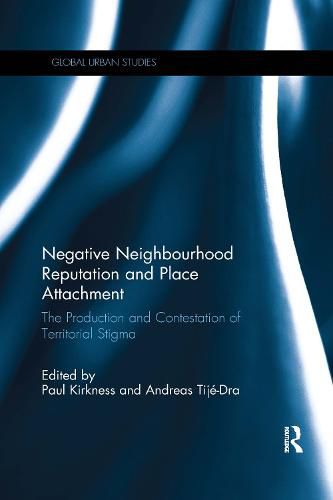Readings Newsletter
Become a Readings Member to make your shopping experience even easier.
Sign in or sign up for free!
You’re not far away from qualifying for FREE standard shipping within Australia
You’ve qualified for FREE standard shipping within Australia
The cart is loading…






The concept of territorial stigma, as developed in large part by the urban sociologist Loic Wacquant, contends that certain groups of people are devalued, discredited and tainted by the reputation of the place where they reside.
This book argues that this theory is more relevant and comprehensive than others that have been used to frame and understand ostracised neighbourhoods and their populations (for example segregation and the racialisation of place) and allows for an inclusive interpretation of the many spatial facets of marginalisation processes. Advancing conceptual understanding of how territorial stigmatisation and its components unfold materially as well as symbolically, this book presents a wide range of case studies from the Global South and Global North, including an examination of recent policy measures that have been applied to deal with the consequences of territorial stigmatisation. It introduces readers to territorial stigmatisation’s strategic deployment but also illustrates, in a number of regional contexts, the attachments that residents at times develop for the stigmatised places in which they live and the potential counter-forces that are developed against territorial stigmatisation by a variety of different groups.
$9.00 standard shipping within Australia
FREE standard shipping within Australia for orders over $100.00
Express & International shipping calculated at checkout
The concept of territorial stigma, as developed in large part by the urban sociologist Loic Wacquant, contends that certain groups of people are devalued, discredited and tainted by the reputation of the place where they reside.
This book argues that this theory is more relevant and comprehensive than others that have been used to frame and understand ostracised neighbourhoods and their populations (for example segregation and the racialisation of place) and allows for an inclusive interpretation of the many spatial facets of marginalisation processes. Advancing conceptual understanding of how territorial stigmatisation and its components unfold materially as well as symbolically, this book presents a wide range of case studies from the Global South and Global North, including an examination of recent policy measures that have been applied to deal with the consequences of territorial stigmatisation. It introduces readers to territorial stigmatisation’s strategic deployment but also illustrates, in a number of regional contexts, the attachments that residents at times develop for the stigmatised places in which they live and the potential counter-forces that are developed against territorial stigmatisation by a variety of different groups.